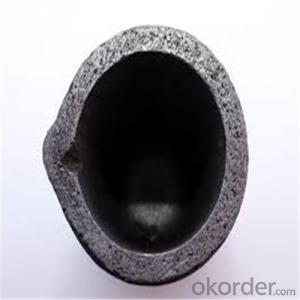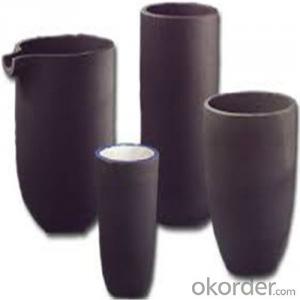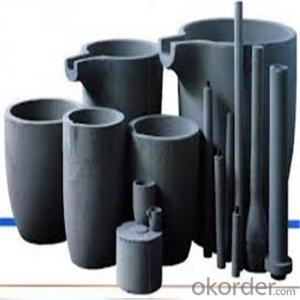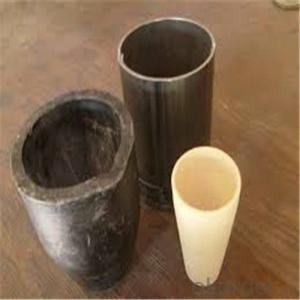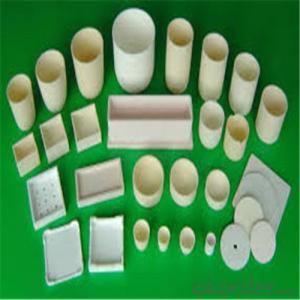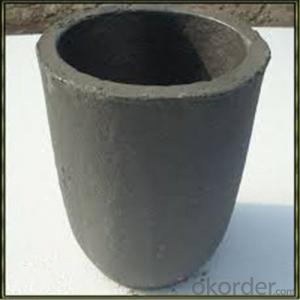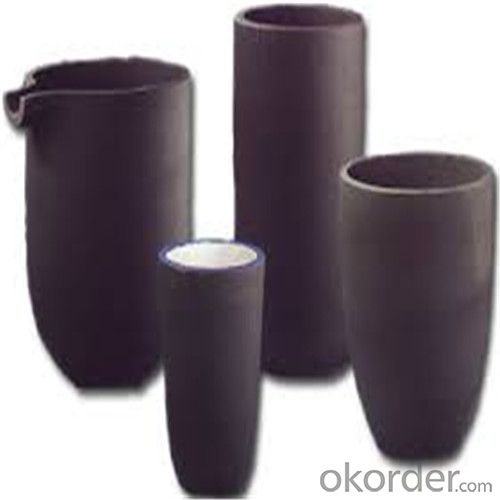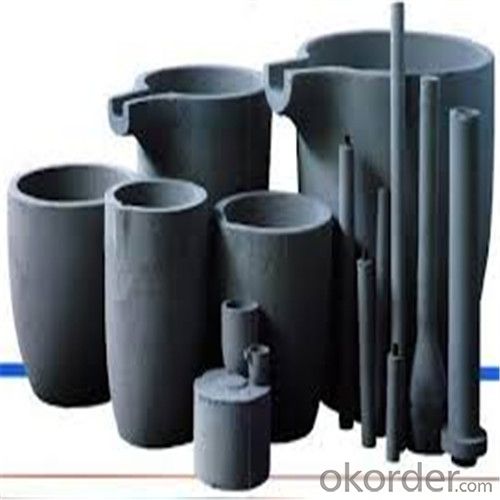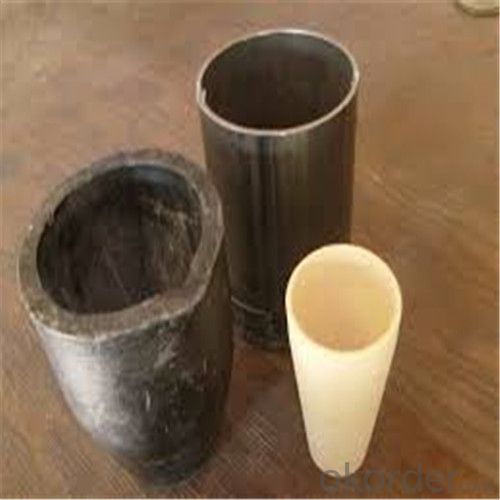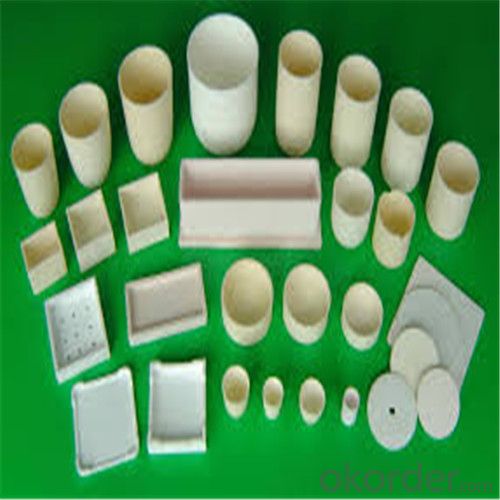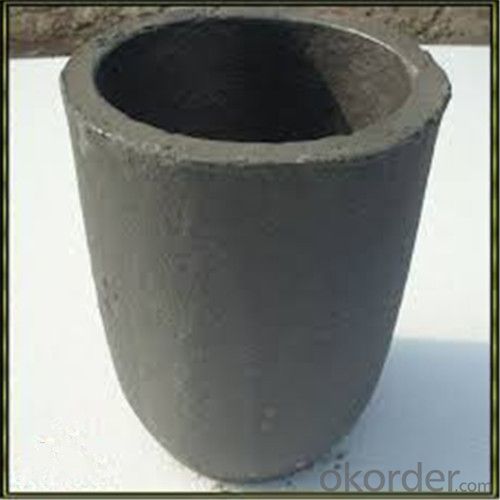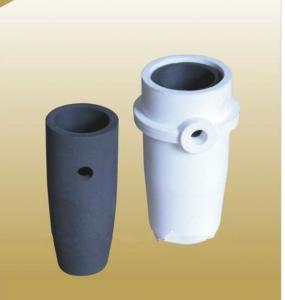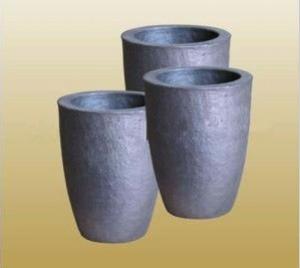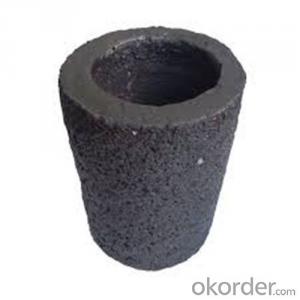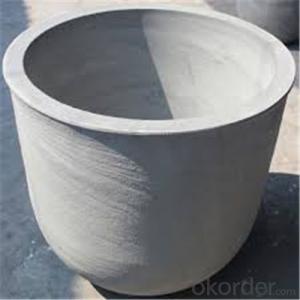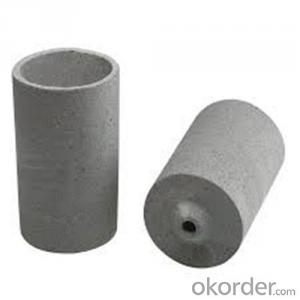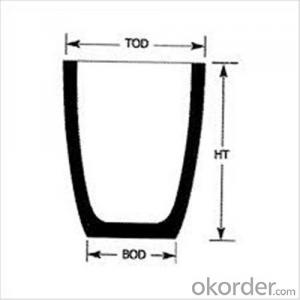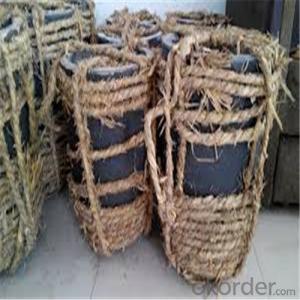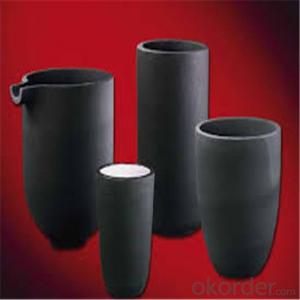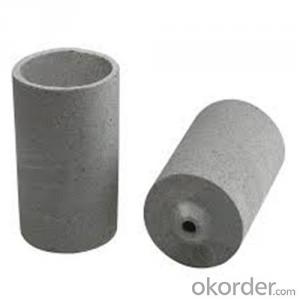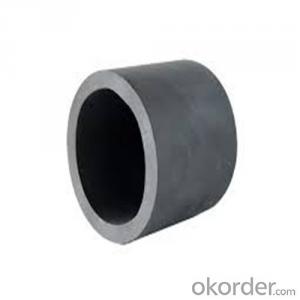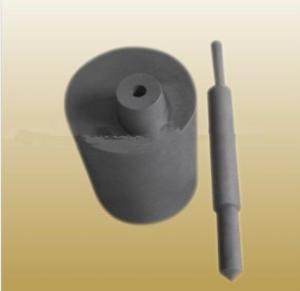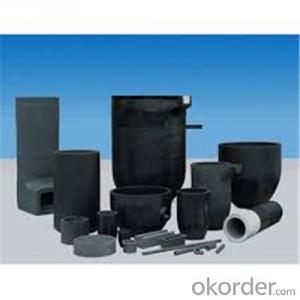Graphite Crucible Price for SIC Crucibles Melting Aluminium, Copper, Brass, Clay Graphite Crucible
- Loading Port:
- Shanghai
- Payment Terms:
- TT OR LC
- Min Order Qty:
- 1 pc
- Supply Capability:
- 1000 pc/month
OKorder Service Pledge
OKorder Financial Service
You Might Also Like
Quick Details for SiC Graphite Crucibles
| Type: | High Strength, graphite crucible crucible | Application: | melting metal | Height: | as your requirements |
| Composition: | High Pure | Top Diameter: | 10-600mm | Bottom Diameter: | 10-1000mm |
| Place of Origin: | China (Mainland) | Brand Name: | Model Number: | ||
| Color: | Black grey | Si3N4%: | 5min | Fe2O3%: | 0.7max |
| C%: | 30-45 | Apparent porosity: | 30max | Refractoriness: | 1680 |
| Bulk Density: | 1.71min | Using life: | >5000 hours | MAX temperature: | 1600c |
Packaging & Delivery
| Packaging Details: | Seaworty packing or as per customer's detail requirement of graphite crucible. |
| Delivery Detail: | within 20-30 days after confirm order of graphite cru |
SiC Graphite Crucibles For Melting Aluminium And Copper, Brass
Product Description
Specifications for Graphite Silicon Carbide Crucible For Aluminum Melting :
1.Long working lifetime: its working lifetime is increased 3-5 times over normal clay-crucible due to the compact body formed under high pressure.
2.High thermal conductivity: high-density body and low apparent porosity greatly improve its heat conductivity.
3.New-style materials: new heat conduction material ensures faster heat conductivity and pollution-free product, reduces adherent slag.
4.Resistance to corrosion:better anti-corrosion than normal clay-crucible.
5.Resistance to oxidation: advanced process dramatically improves its oxidation resistance, which ensures persistent heat conductivity and long working lifetime.
6.High-strength: high-density body and logical structure make the product better compression property.
7.Eco-friendly: energy-efficient and pollution-free, not only ensure metal product purity, but also ensure sustainable development on environment.
8.Multi-function: Can be used in induction graphite crucible furnace


Physicochemical Properties
Type of Crucible | Type S | Type D |
Carbon Content/% | ≥38 | ≥45 |
Bulk Density/(g/cm3) | ≥1.70 | ≥1.85 |
Apparent Porosity/% | ≤29 | ≤21 |
Compression Strength/MPa | ≥20 | ≥25 |
Refractoriness/°C | ≥1400 | ≥1400 |
Type S: Clay graphite crucible
Type D: Isostatic pressing graphite crucible
Cited from CNS China National Standard of Graphite Crucible, which is solely drifted by TIANFU company.
Content Composition
C% | Sic% | AL2O3% | SIO2% |
45%-50% | 20%-30% | 10%-12% | 15-25% |
- Q: What is the recommended stirring method for a graphite crucible?
- The recommended stirring method for a graphite crucible is to use a graphite rod or paddle to gently and continuously stir the contents in a circular motion.
- Q: Can graphite crucibles be used for melting pharmaceutical compounds?
- Yes, graphite crucibles can be used for melting pharmaceutical compounds. Graphite crucibles are known for their high melting point, which makes them suitable for high-temperature applications such as melting metals, alloys, and even certain chemicals. Since pharmaceutical compounds can have different melting points, it is important to ensure that the temperature range of the graphite crucible is compatible with the melting point of the specific compound being melted. Additionally, graphite crucibles are chemically inert and have low reactivity, which reduces the risk of contamination or chemical reactions with the pharmaceutical compounds during the melting process. However, it is essential to consider the specific requirements and properties of the pharmaceutical compound being melted to ensure compatibility with the graphite crucible.
- Q: How is graphite formed?
- The company has advanced production and processing equipment, modern production management, perfect product testing means, a good service network and strong development capabilities. For customers to produce all kinds of special-shaped, high-precision graphite products! Such as: graphite plate, graphite rod, graphite block, graphite crucible, graphite anode plate, graphite mold, graphite lining, graphite bearing, Shi Mohuan, graphite tube, graphite pad, graphite electrode and so on.
- Q: Can graphite crucibles be used for carbonization processes?
- Carbonization processes can make use of graphite crucibles. Graphite is highly suitable for applications that involve high temperatures because of its exceptional thermal conductivity and resistance to thermal shock. Graphite crucibles are frequently employed in carbonization processes, where carbon-rich materials are heated to high temperatures without the presence of oxygen. These crucibles effectively contain and heat the materials. Graphite's high thermal conductivity ensures efficient transfer of heat, resulting in uniform heating and minimal heat loss. Furthermore, graphite's resistance to thermal shock enables it to withstand sudden temperature changes that occur during the carbonization process. In conclusion, graphite crucibles are a dependable and appropriate choice for carbonization processes.
- Q: What are the considerations for selecting a crucible furnace for graphite crucibles?
- When selecting a crucible furnace for graphite crucibles, there are several important considerations to keep in mind. Firstly, the maximum temperature capability of the furnace is crucial, as graphite crucibles typically require high temperatures for melting and refining processes. Additionally, the heating rate and uniformity of the furnace should be assessed to ensure efficient and consistent heating of the crucibles. The size and capacity of the furnace should match the requirements of the crucibles and the desired production volume. It is also important to consider the energy efficiency and cost-effectiveness of the furnace in terms of its fuel or power source. Lastly, the durability and reliability of the furnace's construction and components should be evaluated to ensure a long lifespan and minimal maintenance requirements.
- Q: Can graphite crucibles be used for powder metallurgy?
- Yes, graphite crucibles can be used for powder metallurgy. Graphite crucibles are commonly used in powder metallurgy processes due to their high thermal conductivity, resistance to thermal shock, and ability to withstand high temperatures. They provide a suitable environment for melting and sintering metal powders in powder metallurgy applications.
- Q: How do you use crucibles to process copper?
- How to play lining, you can check the relevant information on Baidu. The working principle of intermediate frequency furnace is induction heating, the inductor is energized, producing dense magnetic lines, cutting the metal in the crucible, generating an electric furnace, and the metal itself generates heat to melt the metal. The power frequency furnace can also pull copper wires.
- Q: Graphite crucible used six or seven times on how bad?
- It should be that the graphite reacts with the oxygen in the air when it is heated, and is corroded once every time
- Q: How does the erosion resistance of graphite affect the performance of a crucible?
- The performance of a crucible is significantly influenced by the erosion resistance of graphite. Graphite is renowned for its exceptional ability to withstand the gradual destruction caused by factors like heat, chemicals, and mechanical forces. In the case of a crucible, which is utilized for melting and holding substances at high temperatures, erosion resistance is of utmost importance in order to preserve the crucible's integrity and longevity. The erosion resistance of graphite ensures that the crucible can endure the harsh conditions it encounters during the melting process. To begin with, the erosion resistance of graphite helps prevent the crucible from deforming or cracking when exposed to high temperatures. Due to its high melting point and ability to withstand extreme heat, graphite is an ideal material for crucibles. Without erosion resistance, the crucible would be susceptible to thermal shock, resulting in cracks or failure. Additionally, erosion resistance is vital for maintaining the chemical stability and purity of the crucible. Graphite is chemically inert, meaning it does not react with most substances. This property allows the crucible to contain a wide range of materials without the risk of contamination. Moreover, the erosion resistance of graphite ensures minimal loss of graphite particles into the molten materials, preventing impurities from entering the final product. Furthermore, the erosion resistance of graphite contributes to the durability and overall performance of the crucible. Graphite crucibles are often subjected to mechanical stresses, such as stirring or pouring molten substances. The erosion resistance of graphite prevents the crucible from wearing away or deteriorating over time, guaranteeing that it can be used repeatedly without compromising its functionality. In conclusion, the erosion resistance of graphite is essential for the performance of a crucible. It helps maintain structural integrity, withstand high temperatures, preserve chemical stability, and enhance durability. Without erosion resistance, the crucible would be susceptible to failure, resulting in potential contamination, material loss, and reduced lifespan.
- Q: Can a graphite crucible be used for silver melting?
- Yes, a graphite crucible can be used for silver melting. Graphite is an excellent heat conductor and can withstand the high temperatures required for melting silver. It is also chemically inert, meaning it does not react with silver or contaminate the metal during the melting process.
Send your message to us
Graphite Crucible Price for SIC Crucibles Melting Aluminium, Copper, Brass, Clay Graphite Crucible
- Loading Port:
- Shanghai
- Payment Terms:
- TT OR LC
- Min Order Qty:
- 1 pc
- Supply Capability:
- 1000 pc/month
OKorder Service Pledge
OKorder Financial Service
Similar products
Hot products
Hot Searches
Related keywords
